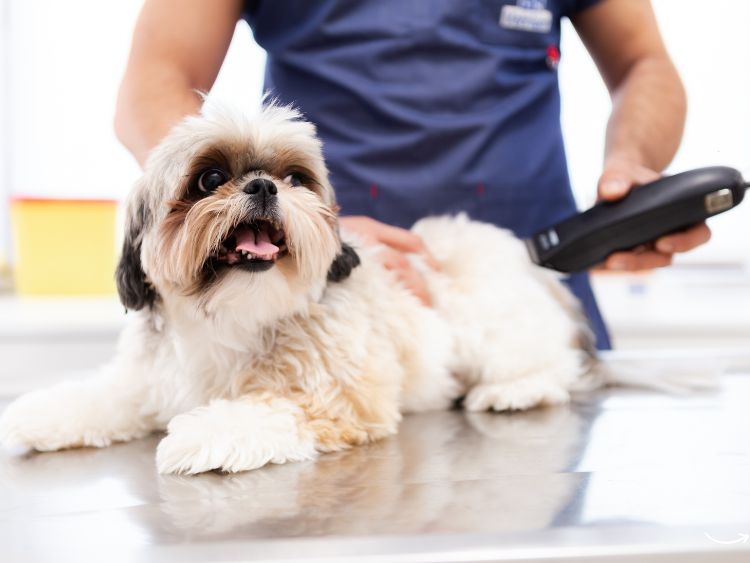Pet grooming is an essential aspect of maintaining your pet’s health and happiness. But, how much should you expect to spend on this vital service? Whether you’re a new pet owner or have had pets for years, understanding pet grooming costs can help you budget effectively and ensure your furry friend gets the care they deserve. Let’s dive into the factors influencing pet grooming costs and what you can expect to pay.
Factors Affecting Pet Grooming Cost
The cost of pet grooming can vary widely based on several factors. Here are the primary considerations that affect pricing:
Type of Pet
- Dogs: Typically, dog grooming costs more than cat grooming due to the different grooming requirements. Dogs may need haircuts, nail trims, ear cleaning, and more.
- Cats: While generally less expensive than dogs, cat grooming can still be pricey, especially for long-haired breeds that require regular grooming to prevent matting.
Size of the Pet
- Small Pets: Smaller pets usually cost less to groom. Their grooming sessions are shorter and require fewer products.
- Large Pets: Larger pets require more time and products, which can increase the grooming cost significantly.
Coat Type and Condition
- Short-haired Pets: Pets with short hair are generally easier and quicker to groom, leading to lower costs.
- Long-haired Pets: Long-haired pets or those with thick, curly coats need more time for brushing, detangling, and trimming, increasing the grooming cost.
- Condition of Coat: If a pet’s coat is matted or dirty, it will require more effort to groom, resulting in higher costs.
Grooming Services Needed
- Basic Grooming: Includes services like bathing, brushing, nail trimming, and ear cleaning. These are usually less expensive.
- Advanced Grooming: Includes haircuts, flea treatments, and special styling. These services are more time-consuming and costly.
Location and Grooming Salon
- Urban Areas: Grooming costs in urban areas tend to be higher due to the higher cost of living.
- Rural Areas: Typically, you can find lower grooming prices in rural areas.
- Grooming Salon: The reputation and facilities of the grooming salon can also affect costs. High-end salons with experienced groomers may charge premium prices.
Additional Services
- Special Treatments: Services such as dental cleaning, de-shedding treatments, and specialty shampoos can add to the overall cost.
- Mobile Grooming: Mobile grooming services that come to your home are convenient but often come at a higher price.
Average Pet Grooming Costs
Understanding the average costs can help you budget for your pet’s grooming needs. Here’s a general breakdown of grooming prices:
Dogs
- Small Dogs: $30-$50 per session
- Medium Dogs: $40-$70 per session
- Large Dogs: $60-$90 per session
- Extra-Large Dogs: $80-$150 per session
Cats
- Short-Haired Cats: $30-$50 per session
- Long-Haired Cats: $50-$70 per session
Specialty Services
- Nail Trimming: $10-$20
- Teeth Cleaning: $50-$100
- Flea Treatment: $20-$50
- De-Shedding Treatment: $20-$40
Tips for Reducing Pet Grooming Costs
Grooming your pet doesn’t have to break the bank. Here are some tips to help reduce costs:
Regular Brushing
Brushing your pet regularly can prevent matting and reduce the frequency of professional grooming needed. It keeps the coat healthy and manageable.
At-Home Grooming
Learning to do basic grooming tasks at home can save money. Tasks like bathing, brushing, and nail trimming can be done at home with the right tools and a bit of patience.
Compare Prices
Shop around and compare prices from different grooming salons. Sometimes, smaller or newer salons offer competitive prices to attract new clients.
Loyalty Programs
Many grooming salons offer loyalty programs or packages that provide discounts for regular customers. Inquire about any available discounts.
DIY Bathing
Bathing your pet at home and only taking them to the groomer for haircuts and specialty services can cut down on costs.
FAQs about Pet Grooming Costs
How often should I groom my pet?
The frequency of grooming depends on your pet’s breed, coat type, and individual needs. Generally, dogs should be groomed every 4-8 weeks, while cats can be groomed every 6-8 weeks.
Can I groom my pet myself?
Yes, you can perform basic grooming tasks like bathing, brushing, and nail trimming at home. However, professional grooming is recommended for haircuts, dental cleaning, and specialized treatments.
Why do long-haired pets cost more to groom?
Long-haired pets require more time and effort to groom due to their coat’s complexity. Detangling, brushing, and trimming long hair are more labor-intensive, leading to higher costs.
Are mobile grooming services worth the cost?
Mobile grooming services offer convenience by coming to your home. They can be worth the cost if you prefer not to travel to a grooming salon or if your pet gets stressed during car rides.
What should I look for in a grooming salon?
Look for a grooming salon with certified and experienced groomers, good reviews, and clean facilities. It’s also important that the salon makes your pet feel comfortable and safe.
Summary
Pet grooming is a crucial part of maintaining your pet’s health and well-being. While grooming costs can vary based on factors like pet type, size, coat condition, and location, understanding these factors can help you budget effectively. By considering tips to reduce costs and knowing the average prices, you can ensure your furry friend stays clean, healthy, and happy without breaking the bank.
Authoritative Links
For further reading, check out these resources:
- ASPCA on pet grooming: www.aspca.org/pet-care/general-pet-care/groom-your-pet
- AKC grooming tips: www.akc.org/expert-advice/health/10-dog-grooming-tips
- PetMD grooming guide: www.petmd.com/dog/grooming/evr_dg_how_to_groom_your_dog
By understanding pet grooming costs and planning accordingly, you can keep your pet looking and feeling great without unexpected expenses.



